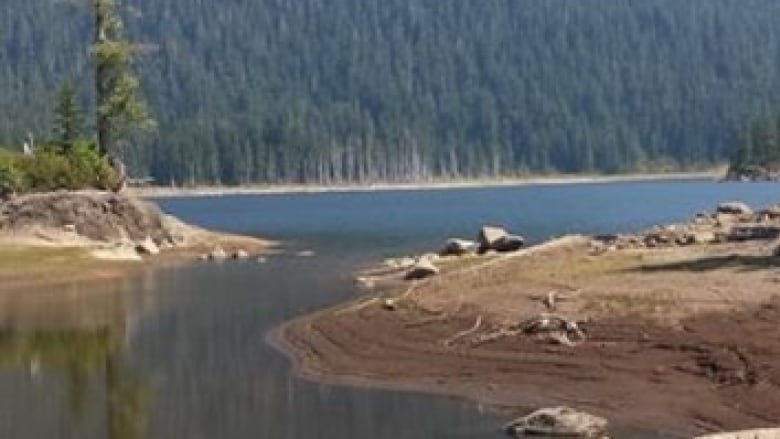Chapman Lake should have a .5 meter high wall to save more spring water, argues SCRD Board candidate Lorne Lewis

By Lorne Lewis, candidate for Area E director
It has been a contentious term at the Sunshine Coast Regional District (SCRD) when it comes to water. As many of you know, I have opposed the Chapman Water Expansion Project because I believe, emphatically, that it is a danger to the lake.
I’ll explain that. The current dam, which controls the outflow of water, was installed in the late 1970s. To install forms to pour the concrete, some small amount of blasting had to be done. Everything appeared to be working as planned- but the following spring the water level did not rise as quickly in the lake as it usually did, and the lake level went down quicker than usual. In August, staff investigated, only to find that water was leaking out several cracks that had been caused by the blasting. Staff rushed to fill as many of the cracks as possible with expanding grout, after which the water level went up and down as it did before the blasting.
The Chapman Water Expansion Project requires that a ten-meter-deep trench be blasted along the channel for a length of 270 meters to where the “emergency” intake will be located.
What could possibly go wrong?
First, the cracks in the rock in the first ten meters closest to the outflow will be grouted. Into the bottom of the trench will then go roughly two meters of screened overburden (dirt and aggregate material from the area), and then a high-density polyethylene pipe will be installed.
If you were a developer installing an SCRD waterline on a development, you would have to install it with sand below, around and above the pipe, but this high-density polyethylene pipe at Chapman Lake will be installed within screened overburden. Then what remains of the blasted rock will be put in the trench on top of the overburden fill. If anything leaks after that, it will be difficult to find and repair.
“My proposals were met with dead silence at SCRD Board meetings”
I had some useful ideas about the water situation which I repeatedly proposed at SCRD Board meetings, but no one was interested. The proposals were met with dead silence and never went on the agenda. Here they are:
- A lake cam. Not an original idea, as it has been mentioned by many people at different times, but what a great conservation tool: one click on the web and there’s the water level.
- Hold back the spring freshet with a minimally invasive/impactful structure, no more than 50 centimeters high. Considering that the surface area of Chapman Lake is 31.7 hectares, that would give us an extra 158,500 cubic meters – water that currently just goes over the dam and out to the ocean. Why not try to hold some back while we are still at Stage 1? Something to note here is that as the lake level rises, the surface area also increases — the lake is cone-shaped. Expert advice says that this is likely the easiest and most affordable way to increase our water supply.
- Diversification of supply: wells in different areas will augment the Chapman system. Wells can be treated at the source, so they can be incorporated into our water system without going through the water treatment plant. We are now in the process of developing some wells, which could have been developed two or more years ago, but the SCRD Board chose to pursue the Chapman Expansion Project before this faster option. I have consistently opposed the expansion project as I feel it is environmentally and sustainably unsound. Also note that as you draw the lake down, the surface area decreases and so the volume of available water decreases as well. The more water is drawn out, the worse it gets.
- Searching for wells where it rains a lot. There has been no effort to locate well sources near Hillside Industrial Park, Twin Creeks and in that area. It rains a lot out there and that water has to go somewhere. The SCRD, as well as owners of several parcels of land in Hillside Industrial Park are well aware of well potential on some of their property. If usable water volume exists, these wells and a local system should be developed.
I believe these ideas need to be put on the agenda to be discussed and examined, and I look forward to doing that with my new fellow board members after the elections.
The Coast Clarion invites all candidates to submit innovative ideas which are part of their platform